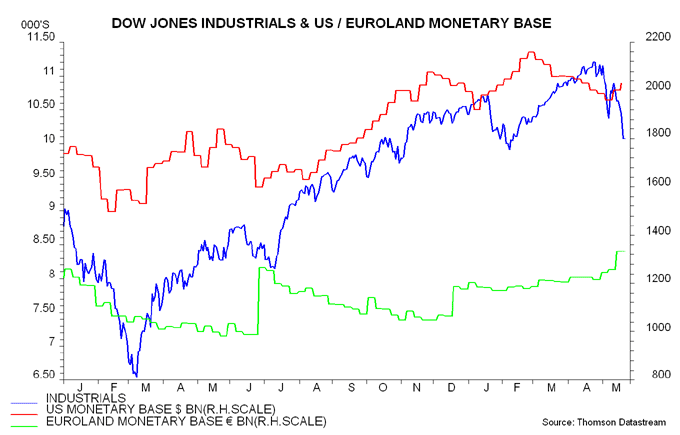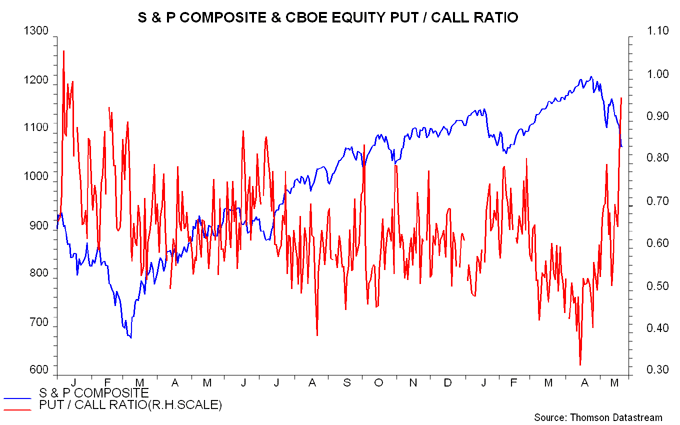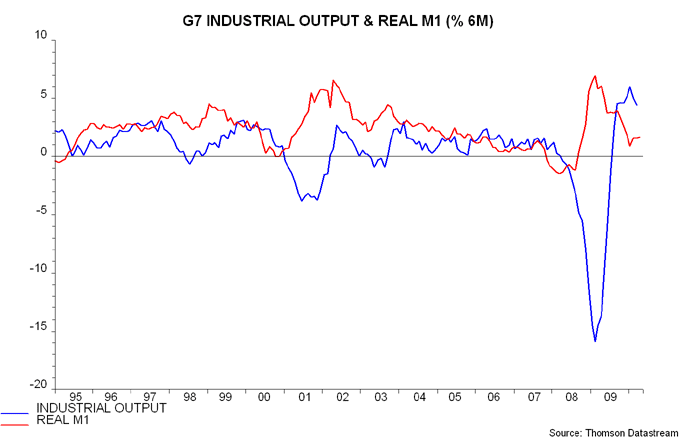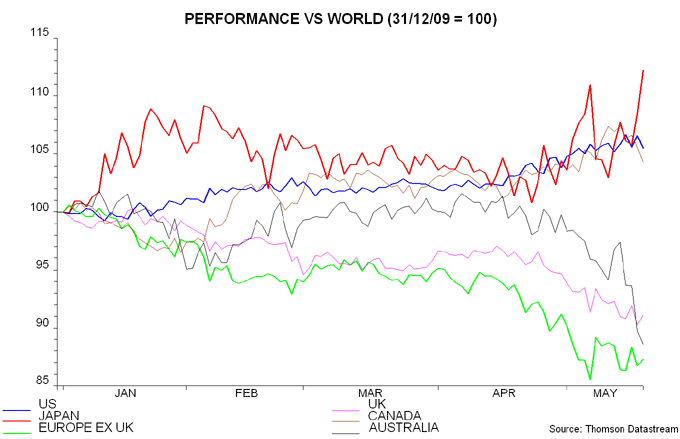The US monetary base (currency plus bank reserves) rose again in the week to Wednesday and is now up by 3.7% from its low a fortnight ago, following a 9.4% contraction between late February and early May. A recovery in the monetary base preceded a rally in equities by three weeks in February / March 2009, by two weeks in June / July and by four weeks in January / February this year – see first chart.
The Eurozone monetary base also rose in the week to last Friday and is up 9.7% since late April – first chart.
Some measures of equity market sentiment look extremely oversold. The Chicago Board Options Exchange equity put / call ratio, for example, is at its highest level since the bear market ended last March – second chart.
The sustainability of any rally in equities may depend on whether central banks continue to expand liquidity. The Fed may be reluctant to reverse fully the earlier contraction of the monetary base unless it believes that market turbulence is a serious threat to the economic recovery. The impact on the base of its dollar swap lending to European central banks has so far proved small – the ECB's 84-day tender of dollars this week attracted bids of only $1.0 billion. The ECB, meanwhile, continues to state that it will sterilise the liquidity effect of its "non-standard" measures.
A signal that the Fed was turning more expansionary would be an announcement of a reduction in the "supplementary financing programme", under which the Treasury has issued an additional $200 billion of bills, placing the proceeds in a special account at the central bank. The Treasury could repay maturing bills by running down the balance in this account, thereby boosting bank reserves and the monetary base.
A further reason for caution about any rally is the still-unfavourable balance between global economic and monetary growth. G7 real narrow money, M1, is continuing to expand more slowly than industrial output – third chart.
The fourth chart shows regional equity market performance, including currency, relative to the World index. Europe ex. the UK has underperformed significantly so far this year but the price relative has made higher lows recently, hinting at a turnaround. Extreme investor pessimism about Europe and the euro is already reflected in positioning, while real M1 is growing faster in the Eurozone than in the US, Japan and UK.



